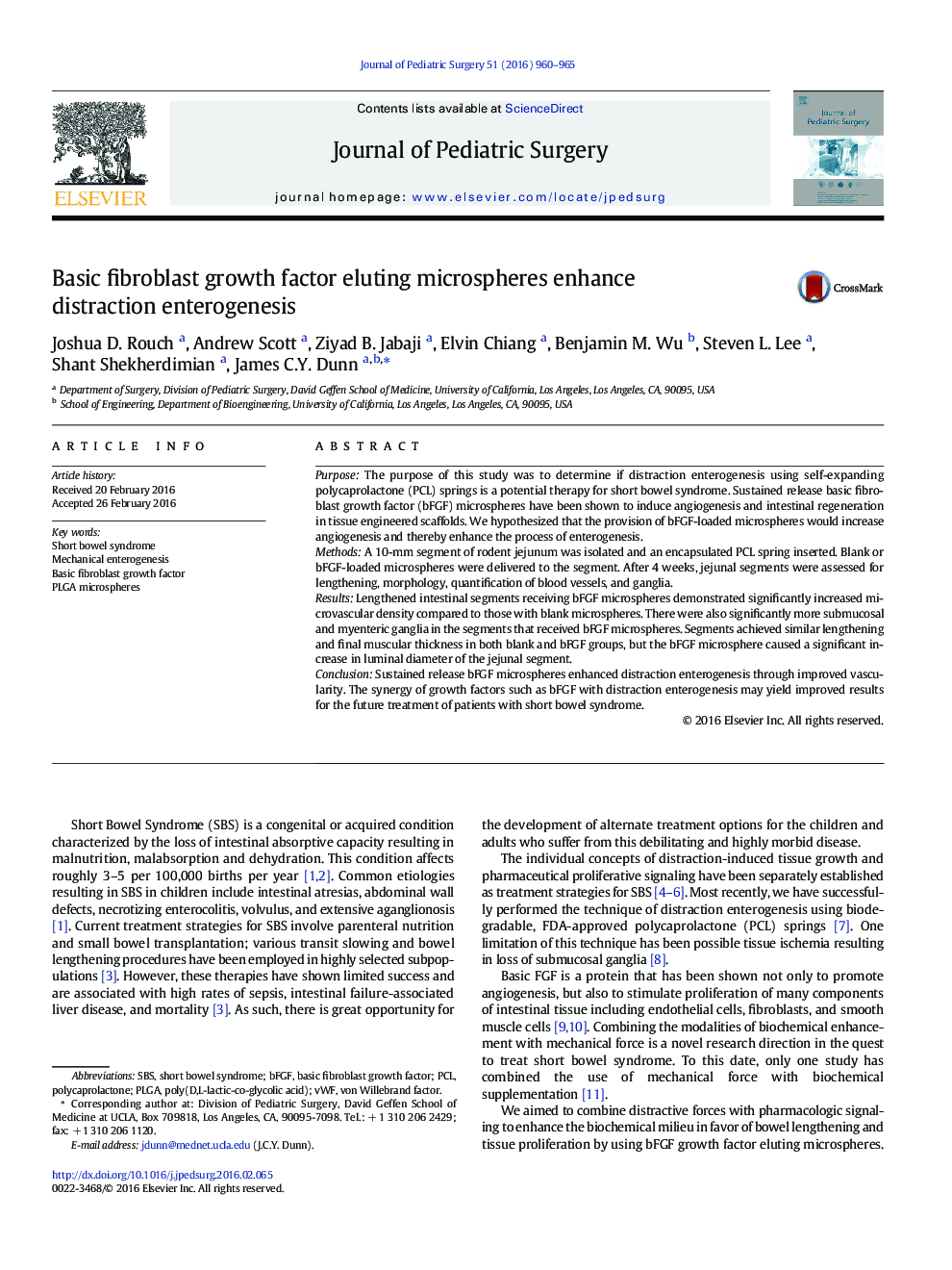| Article ID | Journal | Published Year | Pages | File Type |
|---|---|---|---|---|
| 4154915 | Journal of Pediatric Surgery | 2016 | 6 Pages |
PurposeThe purpose of this study was to determine if distraction enterogenesis using self-expanding polycaprolactone (PCL) springs is a potential therapy for short bowel syndrome. Sustained release basic fibroblast growth factor (bFGF) microspheres have been shown to induce angiogenesis and intestinal regeneration in tissue engineered scaffolds. We hypothesized that the provision of bFGF-loaded microspheres would increase angiogenesis and thereby enhance the process of enterogenesis.MethodsA 10-mm segment of rodent jejunum was isolated and an encapsulated PCL spring inserted. Blank or bFGF-loaded microspheres were delivered to the segment. After 4 weeks, jejunal segments were assessed for lengthening, morphology, quantification of blood vessels, and ganglia.ResultsLengthened intestinal segments receiving bFGF microspheres demonstrated significantly increased microvascular density compared to those with blank microspheres. There were also significantly more submucosal and myenteric ganglia in the segments that received bFGF microspheres. Segments achieved similar lengthening and final muscular thickness in both blank and bFGF groups, but the bFGF microsphere caused a significant increase in luminal diameter of the jejunal segment.ConclusionSustained release bFGF microspheres enhanced distraction enterogenesis through improved vascularity. The synergy of growth factors such as bFGF with distraction enterogenesis may yield improved results for the future treatment of patients with short bowel syndrome.
